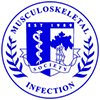Authors: Smeltzer, MS, Beenken, KE, Zharov, V, Galanzha, EILittle Rock, AR
Title: A nanotherapeutic approach to combating Staphylococcus aureus biofilm-associated infection
Purpose: The purpose of this study was to explore the use of laser-induced photoacoustic effects for the targeted, physical destruction of viable Staphylococcus aureus cells irrespective of their metabolic status.
Methods: We investigated the use of gold nanoparticles as a means of accomplishing the laser-induced physical destruction of Staphylococcus aureus irrespective of its metabolic status. The selective targeting of S. aureus was performed using a monoclonal antibody to one of the major surface-clustered proteins, protein A (spa), which is linked to the peptidoglycan portion of the cell wall. For these experiments, an S. aureus osteomyelitis isolate (UAMS-1) was cultured aerobically in tryptic soy broth and grown aerobically 16 h at 37°C. Cells were harvested by centrifugation, resuspended in sterile PBS to a concentration of 2×108 cells/ml, and incubated with a diluted (1:100) monoclonal anti-Protein A antibody (Sigma, St. Louis, MO) for 1.5 h at room temperature with constant rotation. The bacteria were washed once with PBS for 5 min at 16,100 × g and then incubated with a secondary goat anti-mouse IgG (H+L) conjugated with 10, 20, or 40 nm gold particles for 1 h at room temperature. For control purposes, UAMS-1 was incubated with unconjugated 10, 20, and 40 nm colloidal gold particles or with IgG conjugated gold particles without primary anti-Spa Abs. Specificity of the primary and secondary gold-conjugated Abs to protein-A was demonstrated by using Alexa Fluor 488-labeled chicken anti-mouse IgG and Alexa Fluor 594-labeled chicken anti-goat IgG antibodies.S. aureus samples with or without gold nanoparticles were irradiated in an optical cuvette with quartz windows using a Medlite IV Nd:YAG laser in Q-switched mode with wavelengths of 532 nm and a 12-ns pulse width. Laser-induced bacterial damage observed at different laser fluences and nanoparticle sizes was verified by optical transmission, electron microscopy, and conventional viability testing
Results: Application of laser energy led to localized heating and bubble formation around gold nanoparticles due to the overheating of the surrounding liquid layer. High temperatures and, especially, bubble-formation phenomena around attached nanoparticles caused physical damage to the bacterium as confirmed by TEM images. At relatively low laser energies, we observed a very slight penetration of nanoparticles in the cell wall compared to the control without laser exposure. Higher laser energies, or the formation of nanoclusters, led to a deeper penetration of nanoparticles inside the bacterial wall. High laser energy and/or formation of nanoclusters coupled with multi-pulse exposure produced local cell-wall damage and finally complete bacterial disintegration, which can also be seen using optical imaging. These data demonstrate that, despite the relatively high thickness and density of the bacterial cell wall, laser-induced thermal and bubble formation around nanoparticles may potentially cause irreparable damage to bacteria.
Discuassion and Conclusion: In general, our research is a preliminary step toward developing integrated nanomedicine, which combines nanotherapeutics with simultaneous nanodiagnostics for guiding and optimization of thermal-based laser treatment. We demonstrate that this photothermal (PT) technique is a powerful tool that can be used to monitor thermal and accompanied effects at broad temperature ranges from a few degrees (diagnostics) to several hundred or thousand degrees (therapeutics). We believe this approach may be applicable as a therapeutic strategy for infections caused by other types of bacteria, and potentially viral infections (e.g., hepatitis), since both can be labeled with gold nanoparticles. Current efforts are directed at assessing the utility of this technique in vivo with a specific emphasis on biofilm-associated infections including infections of implanted medical devices (e.g. orthopaedic implants).

